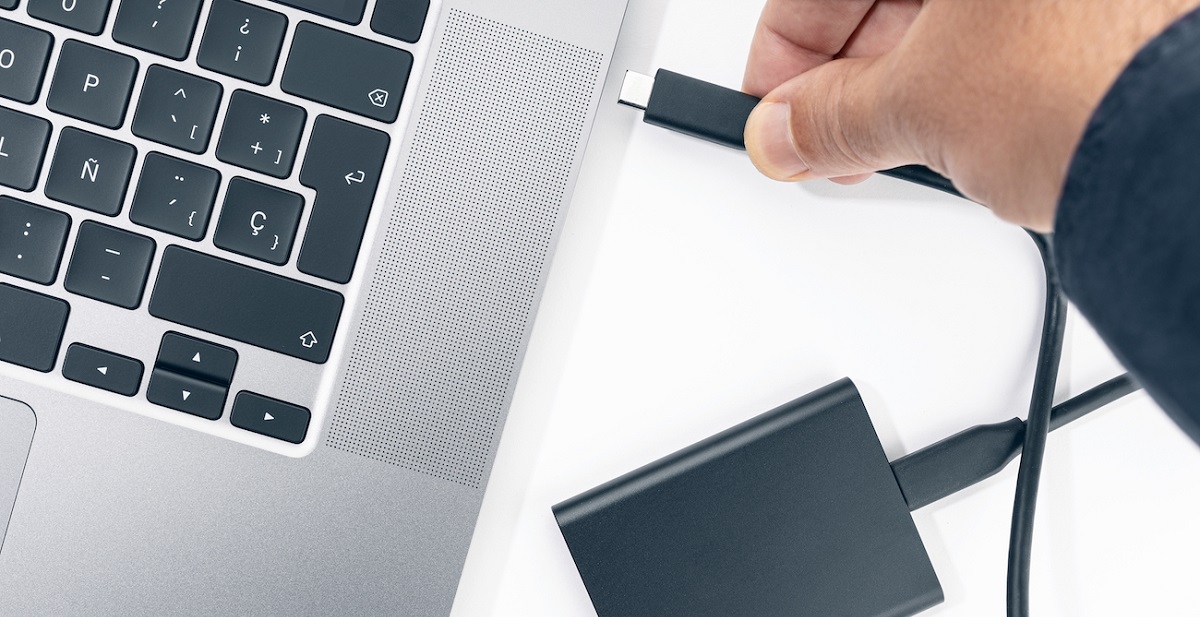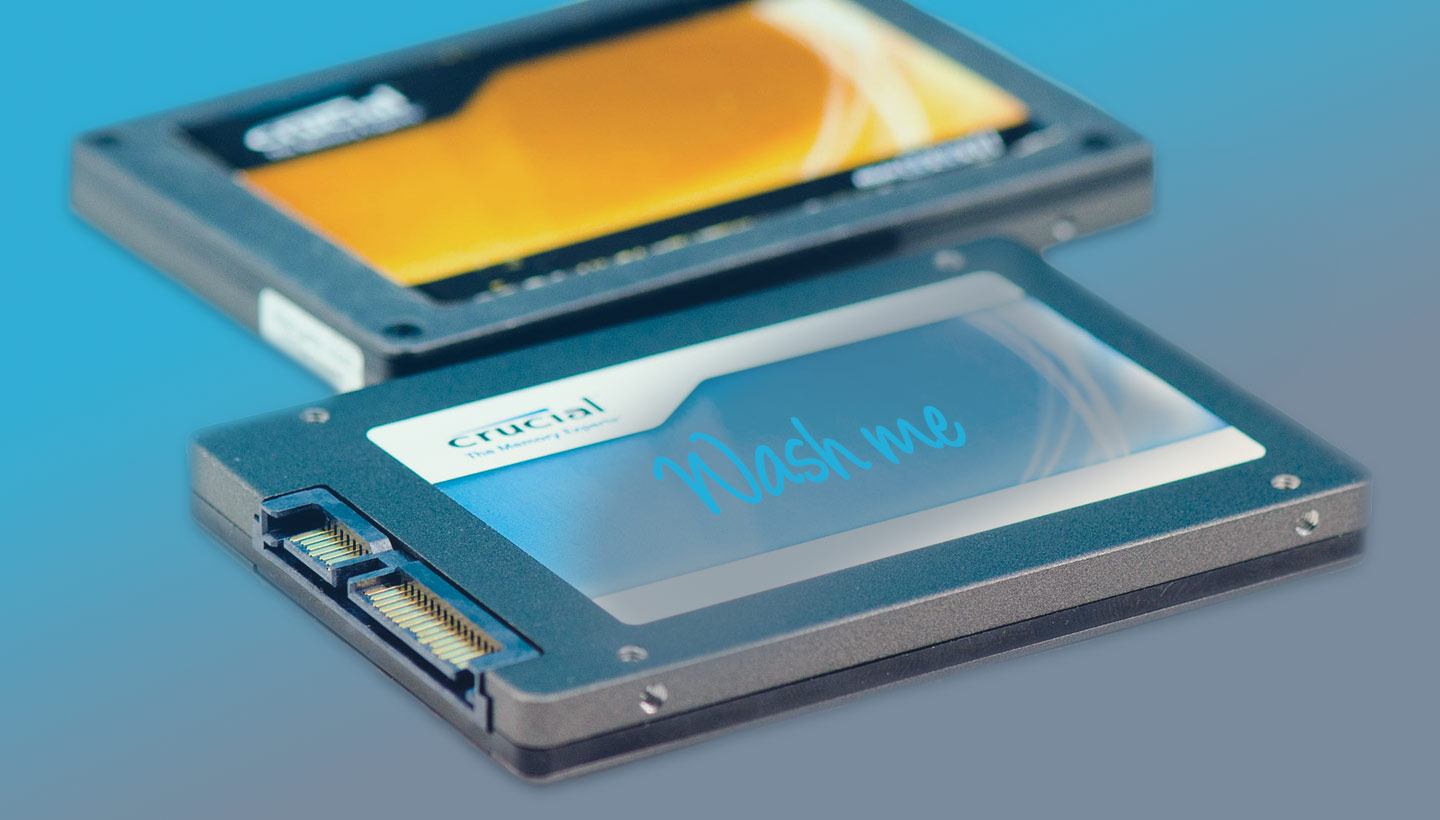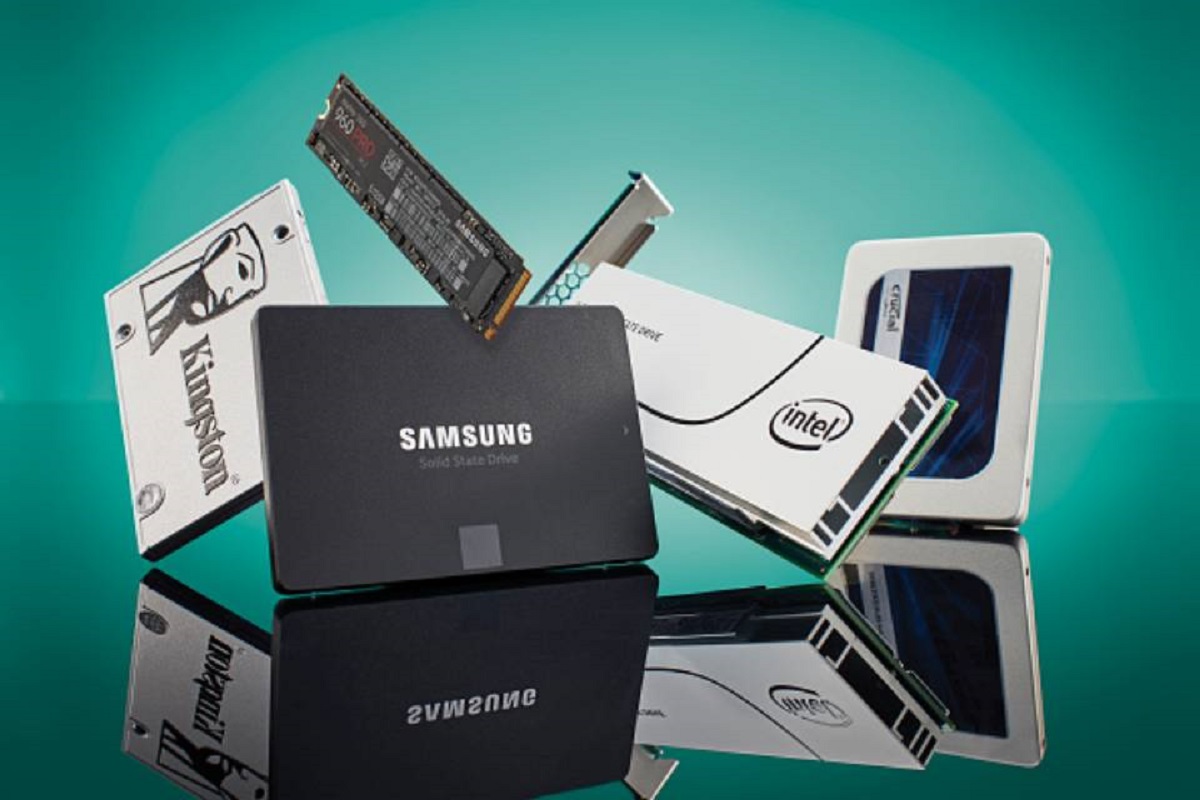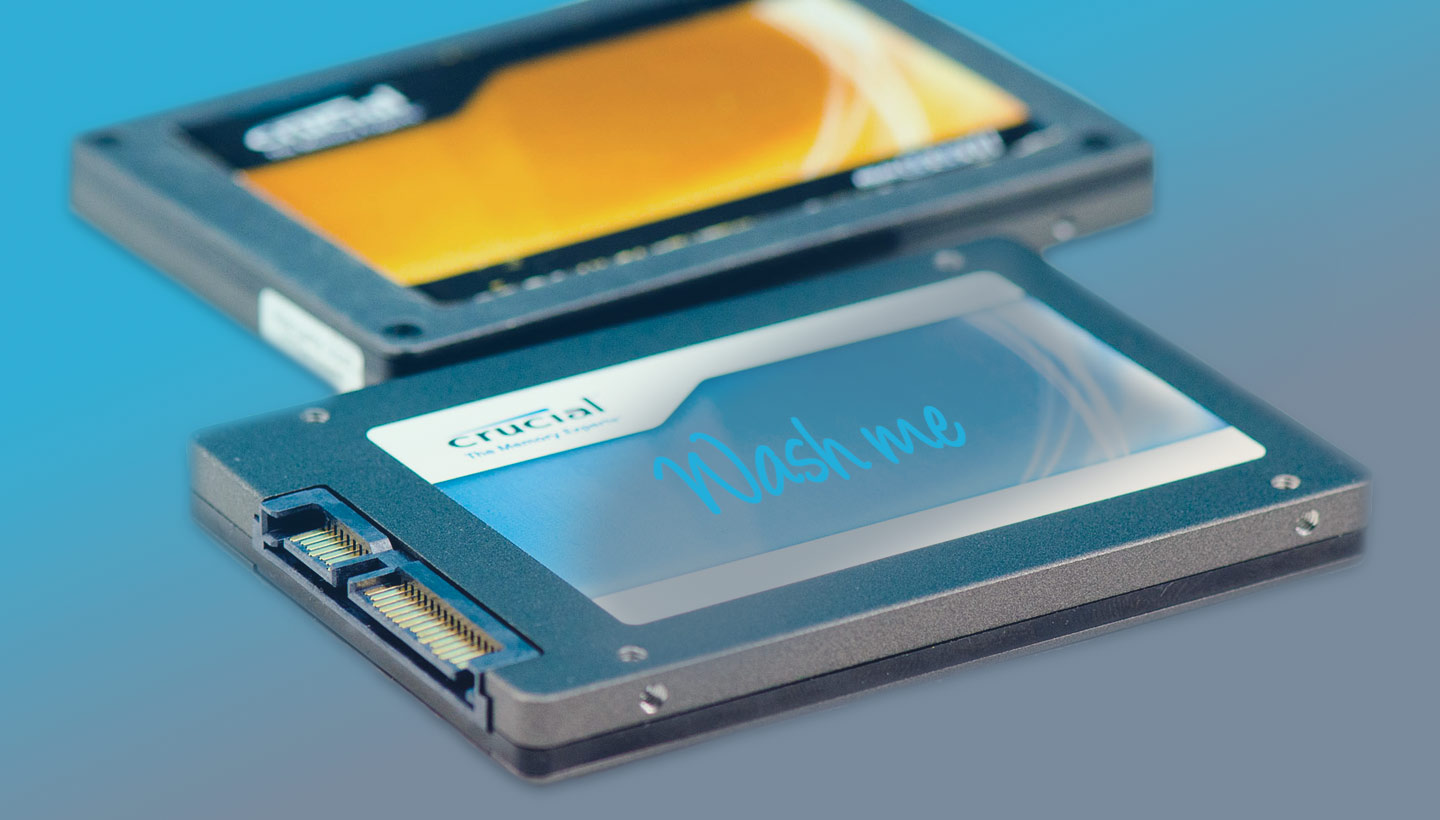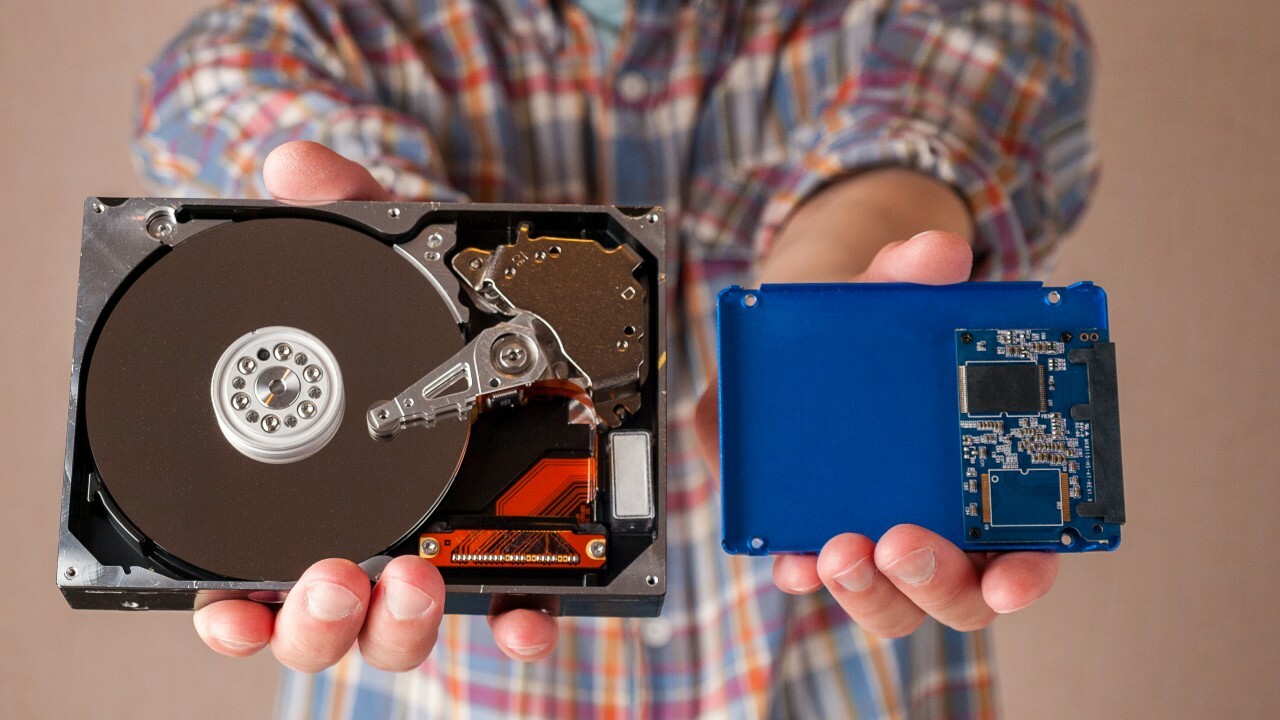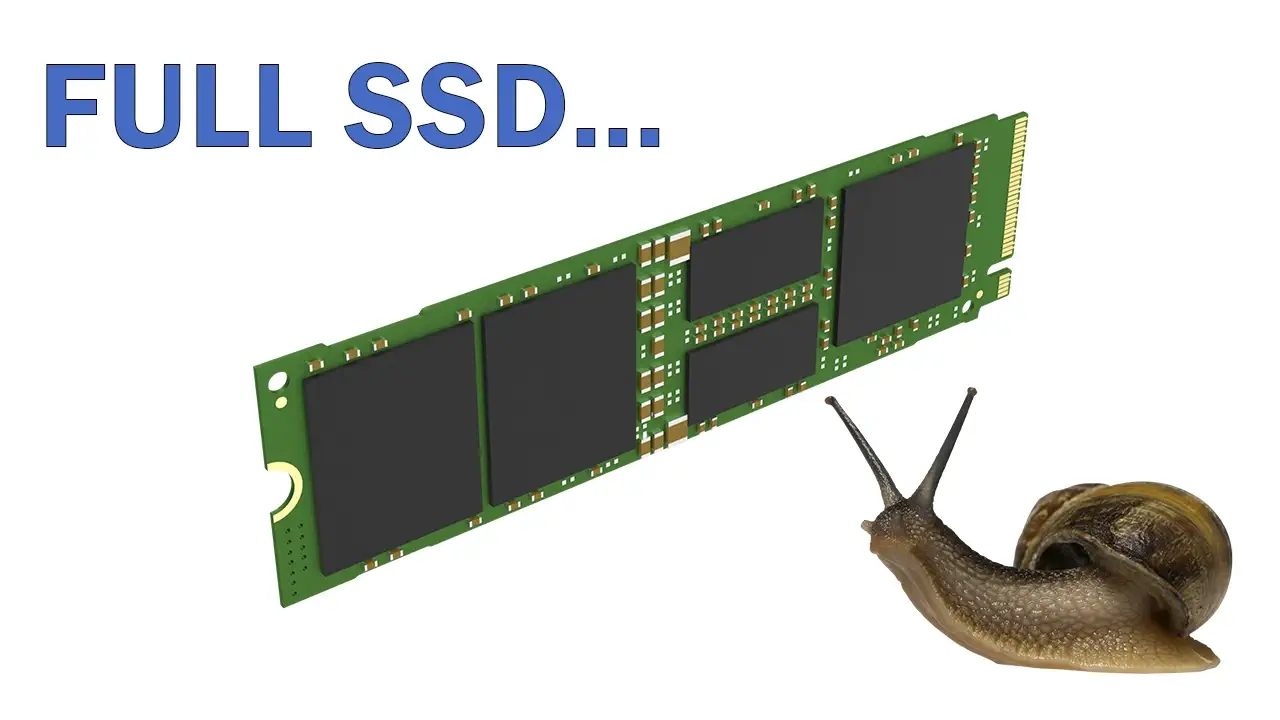Introduction
SSD drives (Solid State Drives) have become increasingly popular due to their high speed and improved performance compared to traditional hard disk drives (HDDs). However, one common issue that many users face is the rapid filling up of their SSD drives. This can occur despite the drive’s larger capacity, leaving users wondering why their storage space is vanishing so quickly.
To understand why your SSD drive is filling up, it’s important to delve into how these drives function. Unlike HDDs, which use spinning platters and read/write heads to access data, SSDs use flash memory to store and retrieve information. This technology offers faster access times, lower power consumption, and increased reliability.
Despite these advantages, SSD drives can still experience clutter and excessive file usage, leading to a reduction in available storage space. Large files, bloatware, temporary files, and misconfigured settings are some of the common culprits behind the filling up of SSD drives.
In this article, we will explore the various reasons why your SSD drive may be filling up and provide practical solutions to reclaim your valuable storage space. By understanding and addressing these factors, you can ensure optimal performance and longevity of your SSD drive.
Understanding SSD Drives
Before we delve into the reasons why your SSD drive may be filling up, let’s first gain a better understanding of how SSD drives work and their key features.
SSD drives are storage devices that use solid-state memory to store and retrieve data. Unlike traditional hard disk drives (HDDs) that rely on spinning platters and read/write heads, SSDs have no moving parts. Instead, they utilize interconnected flash memory chips to store data. This fundamental difference between SSDs and HDDs provides several advantages.
First and foremost, SSDs offer significantly faster read and write speeds compared to HDDs. This results in quicker boot times, faster application loading times, and improved overall system responsiveness. SSDs also consume less power, generate less heat, and tend to be more durable, as they are not susceptible to mechanical failures.
Another important feature of SSD drives is wear leveling. Flash memory cells used in SSDs have a limited number of erase/rewrite cycles before they become unreliable. Wear leveling technology ensures that data is distributed evenly across all cells, minimizing the wear on any individual cell and extending the overall lifespan of the drive.
SSDs also support TRIM, a feature that helps maintain optimal performance by erasing invalid or unused data blocks. This process ensures that the SSD maintains its peak performance over time, mitigating the performance degradation that can occur with continuous usage.
It’s worth noting that SSDs tend to have smaller capacities compared to HDDs, especially when considering price-to-capacity ratios. However, advancements in technology have significantly improved the affordability of SSDs, making them a viable option for both laptop and desktop users.
Now that we have a better understanding of SSD drives and their key features, let’s explore the reasons why your SSD drive may be filling up. By identifying these factors, we can effectively address and manage the storage space on your SSD drive.
Reasons for SSD Drive Filling Up
There are several factors that can cause your SSD drive to rapidly fill up. Understanding these reasons will help you identify and address them, allowing you to regain precious storage space. Let’s explore the most common culprits behind the filling up of SSD drives:
- Large Files and Multimedia: Storing large video files, high-resolution images, and other multimedia content can quickly consume a significant amount of storage space. Consider offloading these files to external storage or cloud solutions to free up space on your SSD drive.
- Bloatware and Unnecessary Programs: Over time, your computer may accumulate unnecessary programs and applications that take up valuable storage space. Regularly uninstall unused software and utilize tools like CCleaner to remove leftover files and registry entries.
- Temporary Files and Cache: Temporary files and cache generated by your operating system and applications can accumulate over time. Utilize built-in disk cleanup tools or third-party software to remove these files and free up space.
- System Restore Points: Windows creates system restore points as a backup mechanism, but these can occupy a significant amount of space on your SSD drive. Adjust the settings to limit the number of restore points or consider disabling the feature if you have alternative backup solutions in place.
- Hidden Files and Folders: Some files and folders may be hidden by default, taking up space without your knowledge. Unhide hidden files and folders and delete any unnecessary ones to reclaim storage space.
- Misconfigured Application Settings: Some applications may have settings that automatically download and store files, even if they are not necessary. Review the settings of your frequently used applications and modify them to avoid unnecessary file downloads.
- Virtual Machines and Disk Images: If you use virtualization software or create disk images for testing purposes, they can occupy a significant amount of space. Delete unnecessary virtual machines and disk images to free up storage space on your SSD drive.
- Downloads Folder Clutter: The default downloads folder is often a dumping ground for various files, including installation packages and temporary downloads. Regularly clean out this folder to keep it clutter-free and free up space.
- Windows Update Files: Windows updates can create backup files and consume a substantial amount of space. Use disk cleanup tools to delete unnecessary update files and regain storage space.
- Lack of Disk Cleanup Maintenance: Regular maintenance, such as running disk cleanup and emptying the recycle bin, is essential to keep your SSD drive free from unnecessary files. Make it a habit to perform these tasks periodically.
By addressing these common reasons behind the filling up of SSD drives, you can effectively manage and optimize your storage space. A proactive approach to maintenance and storage management will ensure that your SSD drive continues to perform at its best.
Large Files and Multimedia
One of the primary factors contributing to the rapid filling up of your SSD drive is the presence of large files and multimedia content. Storing high-definition videos, large image files, and other media files can quickly consume a significant amount of storage space.
As technology advances, the size of multimedia files continues to grow. Videos, especially those recorded in 4K resolution, can take up several gigabytes of space. Similarly, high-resolution images and graphic design files can also be quite large.
If you find your SSD drive filling up quickly, it’s essential to assess the multimedia content stored on it. Consider transferring large files and media libraries to external storage solutions, such as portable hard drives or network-attached storage (NAS) devices. This way, you can free up space on your SSD drive while still having access to your files when needed.
Cloud storage services are another viable option for offloading large multimedia files. Services like Google Drive, Dropbox, and Microsoft OneDrive offer ample storage space and allow you to access your files from multiple devices. By uploading your multimedia files to the cloud, you can save space on your SSD drive and still access them whenever necessary.
Another approach is to consider compressing large files to reduce their size without compromising quality. There are various compression tools available that can effectively shrink the size of media files, such as videos and images, without significant loss in quality. This allows you to store more files on your SSD drive without using up as much space.
Furthermore, consider using streaming services rather than downloading and storing large media files. Platforms like Netflix, Spotify, and Amazon Prime Video provide access to a vast library of content that can be streamed on demand. This eliminates the need to download and store large files, freeing up space on your SSD drive.
By managing your large files and multimedia content effectively, you can significantly reduce the amount of storage space they consume on your SSD drive. Offloading files to external storage or cloud solutions and utilizing compression techniques can help you maintain a healthy amount of free space on your SSD drive while still enjoying your favorite media files.
Bloatware and Unnecessary Programs
Bloatware and unnecessary programs can quickly eat up storage space on your SSD drive without providing any tangible benefits. These are often pre-installed software that come bundled with your computer or applications that you have installed but no longer use.
Manufacturers often preload their computers with various applications and utilities that are not essential for the system to function properly. These bloatware programs can take up a significant amount of space on your SSD drive, causing it to fill up faster than expected. Examples of bloatware include trial versions of software, unnecessary system tools, and preinstalled games that you may never use.
To reclaim storage space, it’s important to identify and uninstall any unwanted or unnecessary programs. Start by reviewing the list of installed applications on your computer. Access the “Apps & Features” or “Programs and Features” section in the Control Panel (Windows) or the Applications folder in Finder (Mac) to view a list of all installed programs.
Take your time to assess each program and consider whether it’s something you actually use or need. Uninstall any applications that you no longer require, being careful not to remove any critical system components.
In addition to bloatware, it’s also vital to review and remove any unnecessary applications or software that you may have installed over time. Many times, users install programs to test them out or try new things, only to forget about them later. These forgotten applications can accumulate and take up valuable storage space on your SSD drive.
Furthermore, leftover files and registry entries can still linger on your system even after uninstalling certain programs. To thoroughly clean up your system, consider using third-party software like CCleaner, which can help remove residual files and optimize your system for better performance.
Regularly keeping an eye on the programs installed on your computer and performing cleanups will not only free up space on your SSD drive, but also ensure that your system remains optimized and clutter-free.
Temporary Files and Cache
Temporary files and cache can accumulate over time and take up a considerable amount of storage space on your SSD drive. These files are created by your operating system and applications as a way to store temporary data or speed up subsequent operations. While they serve a purpose, they can quickly fill up your SSD drive if not properly managed.
The temporary files and cache stored on your SSD drive can include things like browser cache, system logs, error reports, temporary installation files, and more. These files are meant to be temporary and should ideally be removed periodically to free up storage space.
Fortunately, both Windows and macOS provide built-in tools to help you manage these files and reclaim storage space. In Windows, you can use the Disk Cleanup utility to clear temporary files, including system files, Windows Update cache, and more. Simply search for “Disk Cleanup” in the Start menu, select the drive you want to clean, and follow the prompts to remove unnecessary files.
Similarly, macOS users can utilize the “Storage” feature in the “About This Mac” window to manage temporary files. In the Apple menu, select “About This Mac,” then click on the “Storage” tab. From there, you can review the types of files taking up space and use the “Manage” button to clear temporary files, caches, and other unneeded items.
Additionally, many third-party software tools are available that can help you clean up temporary files and cache on both Windows and macOS. These tools often offer more advanced cleaning options and can provide a more thorough cleanup of your system.
Regularly cleaning temporary files and cache on your SSD drive is important not only for freeing up storage space but also for maintaining optimal system performance. By removing unnecessary files, you can make more room for important data and ensure that your SSD drive continues to operate efficiently.
System Restore Points
System Restore is a feature available in Windows that allows you to create restore points, which are snapshots of your system’s settings and configuration at a specific point in time. While this feature can be beneficial for recovering from system issues or software conflicts, it can also consume a significant amount of storage space on your SSD drive.
By default, Windows creates restore points whenever significant system changes occur, such as before installing new software or drivers. These restore points can quickly accumulate, taking up valuable storage space on your SSD drive.
If you find that your SSD drive is filling up quickly, it may be worth reassessing your system restore settings. One option is to limit the number of restore points created by adjusting the storage space allocated for these snapshots.
To adjust the system restore settings in Windows, follow these steps:
- Search for “System Restore” in the Start menu and open the System Properties dialog.
- Select the drive where your SSD is located (usually C:).
- Click on the “Configure” button to access the restore settings for that drive.
- On the Configuration dialog, you can either disable system restore altogether or adjust the maximum disk space usage allocated for restore points.
Reducing the allocated disk space for restore points can help free up storage space on your SSD drive without completely disabling the feature. However, keep in mind that limiting the number of restore points may affect your ability to roll back system changes in the future.
If you have alternative backup solutions in place, such as regular disk imaging or data backups, you may also consider disabling system restore altogether. This can help free up a significant amount of storage space on your SSD drive.
Remember to weigh the benefits of system restore against the amount of storage space it consumes. If you rely on this feature for system recovery, it may be worth allocating more space for restore points. On the other hand, if you rarely use or depend on system restore, reducing the allocated disk space or disabling it entirely can help reclaim valuable storage space on your SSD drive.
Hidden Files and Folders
Hidden files and folders on your SSD drive can take up storage space without your knowledge. These files are usually hidden by default as a way to protect and prevent accidental modification or deletion. However, they can accumulate over time and occupy a significant amount of space on your SSD drive.
Hidden files and folders can include system files, configuration files, log files, and more. Some applications also create hidden files or save user-specific settings and data in hidden folders. While these files serve a purpose, they may not always be necessary or essential for your daily computer usage.
To unhide hidden files and folders on Windows:
- Open File Explorer and go to the “View” tab.
- Check the “Hidden items” checkbox in the “Show/hide” section. This will reveal hidden files and folders in the current directory and its subdirectories.
On macOS, you can unhide hidden files and folders by using the Terminal app:
- Open the Terminal app from the Utilities folder within the Applications folder.
- Type in the command:
defaults write com.apple.finder AppleShowAllFiles YESand press Enter/Return. - Hold down the Option/Alt key, then right-click on the Finder icon in the dock and select “Relaunch”.
Once hidden files and folders are visible, you can review their contents and determine if they are taking up unnecessary storage space. Be cautious when modifying or deleting system files, as these can affect the stability and functionality of your computer. If you are unsure about a particular file or folder, it’s best to research its purpose or seek assistance from knowledgeable sources.
After identifying hidden files and folders that are no longer needed, you can safely delete them to free up storage space on your SSD drive. Regularly checking for and removing unnecessary hidden files and folders will help keep your SSD drive clutter-free and ensure that you have ample storage space for your important data and applications.
Misconfigured Application Settings
Misconfigured application settings can contribute to the filling up of your SSD drive without you realizing it. Some applications are set to automatically download and store files, even if those files are not necessary for your day-to-day usage.
It’s essential to review the settings of your frequently used applications and modify them to avoid unnecessary file downloads and storage. Here are a few examples of how misconfigured application settings can lead to storage space consumption:
- Offline File Sync: Some applications allow you to sync files across devices, but this can result in the automatic downloading of files to your SSD drive. Review the sync settings and selectively sync only the files you truly need on your SSD drive.
- Automatic Attachments Downloads: Email clients and messaging applications may automatically download attachments, including large files or media. Adjust the settings to only download attachments when necessary or to a different storage location.
- Automatic Updates with Large Installers: Software updates can have large installers that can quickly consume storage space. Configure your software update preferences to either prompt you before downloading or to choose a different download location.
- Cloud Backup Applications: Cloud backup services may automatically back up your files, including large media files, without you realizing it. Adjust the backup settings to exclude files or folders that you don’t need to back up on your SSD drive.
- Media Players: Media players can create caching files, playlists, and album art caches. Review the settings of your media player and adjust the caching behavior or change the storage location for these files.
By taking the time to review and modify the settings of your applications, you can prevent unnecessary file downloads and storage on your SSD drive. Keep in mind that these settings can vary between different applications, so it’s essential to inspect each application individually.
Regularly reviewing and adjusting application settings will not only help conserve storage space on your SSD drive but also contribute to smoother performance and efficient usage of system resources.
Virtual Machines and Disk Images
Virtual machines (VMs) and disk images can significantly contribute to the filling up of your SSD drive. Virtualization software allows you to emulate multiple operating systems and run them concurrently on your computer. While this can be useful for testing and development purposes, VMs and disk images can consume a considerable amount of storage space.
A virtual machine typically consists of a large disk image file that contains the entire operating system, applications, and data for the virtualized environment. These disk images can take up several gigabytes or even terabytes of space, depending on the size of the VM and its purpose.
It’s crucial to regularly evaluate the necessity of the virtual machines and disk images you have on your SSD drive. Consider deleting any unused or outdated VMs that are no longer required. Before deleting a VM, make sure to back up any important files or data contained within it.
If you frequently use VMs but find that they are taking up an excessive amount of space, you can explore options to optimize their storage usage. Some virtualization software allows you to compress or compact virtual machine disk images, reducing their size without compromising functionality.
Another option is to store your VMs and disk images on external storage devices, such as external SSDs or large capacity hard drives. By offloading these large files to external storage, you can free up space on your SSD drive while still having access to your virtual machines when needed.
Consider utilizing cloud-based or remote virtual machines if they fit your use case. These services allow you to run VMs on remote servers, eliminating the need for local storage space on your SSD drive.
By managing your virtual machines and disk images effectively, you can ensure that your SSD drive has enough space for your current needs. Regularly reviewing and removing unnecessary VMs or optimizing their storage usage will help keep your SSD drive free from excessive storage consumption.
Downloads Folder Clutter
The Downloads folder is often a default location for storing files that are downloaded from the internet. Over time, this folder can become cluttered with various files, including installation packages, documents, images, and more. If left unchecked, the Downloads folder can quickly fill up your SSD drive and impact its available storage space.
Regularly cleaning out your Downloads folder can help free up storage space and keep your SSD drive organized. Here are a few steps you can take to manage and declutter your Downloads folder:
- Review and Delete Unnecessary Files: Browse through your Downloads folder and identify files that are no longer needed. Remove any duplicate files, outdated documents, or files that serve no purpose.
- Create Subfolders: Consider creating subfolders within your Downloads folder to categorize different types of files. For example, you can have separate folders for software installations, images, PDFs, and other file types. This can make it easier to locate specific files and keep your Downloads folder organized.
- Sort and Move Files: Move files from your Downloads folder to appropriate locations on your SSD drive or external storage. For example, move documents to the Documents folder, images to the Pictures folder, or installers to a dedicated folder for software installations.
- Set a Default Download Location: To prevent your Downloads folder from getting cluttered in the future, consider changing the default download location for your internet browser or other applications. Choose a different folder or set different locations for different file types to keep your SSD drive organized.
- Automate File Organization: Use file management tools or utilities that can automatically organize and sort files in your Downloads folder. These tools can help you stay on top of file clutter and maintain a clean Downloads folder without manual effort.
By regularly cleaning out your Downloads folder and organizing files, you can prevent unnecessary clutter and reclaim storage space on your SSD drive. An organized Downloads folder not only improves storage management but also enhances overall file accessibility and system performance.
Windows Update Files
Windows updates are essential for keeping your operating system secure and up to date. However, these updates can generate temporary files and backup files that can take up a significant amount of space on your SSD drive.
When Windows installs updates, it creates backup files that allow you to roll back to a previous state in case of issues with the update. While this backup feature can be useful, it can also consume substantial storage space, especially if you have multiple backup points stored on your SSD drive.
To manage Windows update files and reclaim storage space on your SSD drive, follow these steps:
- Open the “Settings” app by either clicking the Start button and selecting the gear icon or pressing the Windows key + I.
- Click on “System” and then select “Storage” in the left navigation pane.
- Under “Local Disk (C:)”, click on “Temporary files”.
- Scroll down and check the box next to “Previous Windows installations” and any other update-related files you want to remove.
- Click on the “Remove files” button to delete the selected files and reclaim the storage space.
Keep in mind that removing previous Windows installations and related files means you won’t be able to roll back to a previous Windows version. Therefore, ensure that you have a recent backup of your important files and consider using disk imaging software to create a system backup before proceeding with the removal.
Windows also provides the “Disk Cleanup” utility, which can help you remove unnecessary system files, including update-related files. To access Disk Cleanup, simply search for it in the Start menu, select your SSD drive, and follow the prompts to delete temporary files and free up space.
Regularly removing old Windows update files and temporary installation files can help maintain sufficient storage space on your SSD drive. By doing so, you not only ensure that your system stays updated but also optimize the performance and longevity of your SSD drive.
Lack of Disk Cleanup Maintenance
A lack of regular disk cleanup maintenance can contribute to the filling up of your SSD drive. Over time, temporary files, cache, and other unnecessary data can accumulate and consume valuable storage space. Performing routine disk cleanup is essential for maintaining an optimized and clutter-free SSD drive.
Here are a few steps you can take to ensure proper disk cleanup maintenance:
- Utilize Built-in Disk Cleanup Tools: Both Windows and macOS provide built-in disk cleanup tools that can help you remove temporary files, cache, and other unneeded data. In Windows, search for “Disk Cleanup” in the Start menu, select your SSD drive, and follow the prompts to remove unnecessary files. On macOS, access the Storage Management feature in the “About This Mac” window to manage and delete unneeded files.
- Third-Party Disk Cleanup Software: Consider using reputable third-party disk cleanup software to perform a more thorough and comprehensive cleanup of your SSD drive. These tools can often identify additional areas of clutter and help you reclaim even more storage space. However, exercise caution when downloading and using third-party software, as some may contain malicious components.
- Regularly Empty the Recycle Bin: Deleted files are often stored in the Recycle Bin or Trash, taking up space on your SSD drive. Make it a habit to regularly empty the Recycle Bin or Trash to permanently delete these files and free up storage space.
- Delete Unnecessary System Restore Points: As mentioned earlier, system restore points can consume a significant amount of storage space. Adjust the settings to limit the number of restore points or delete older ones to free up storage space.
- Manage Installed Programs: Uninstall any unnecessary and unused programs from your SSD drive. Use the “Add or Remove Programs” feature in Windows or the “Applications” folder in macOS to manage your installed software. Removing unused programs not only frees up storage space but also improves overall system performance.
- Regularly Check for Disk Errors: Perform regular disk error checks using the built-in disk scanning tools provided by the operating system. These tools can help identify and fix any potential errors or file system issues on your SSD drive, ensuring optimal performance and preventing data loss.
By incorporating regular disk cleanup maintenance into your routine, you can effectively manage and optimize the storage space on your SSD drive. This will not only improve the performance of your system but also extend the lifespan of your SSD drive.
Conclusion
Managing the storage space on your SSD drive is essential for maintaining optimal performance and ensuring that you have enough room for your important data and applications. In this article, we have explored ten common factors that can contribute to the filling up of your SSD drive. By understanding these factors and implementing effective strategies, you can reclaim valuable storage space and keep your SSD drive operating at its best.
From large files and multimedia content to unnecessary programs and misconfigured application settings, each factor requires attention and proper management. Regularly reviewing and cleaning up your SSD drive can help mitigate the storage space-related issues and improve the overall efficiency of your system.
Remember to offload large files and multimedia content to external storage or cloud solutions, uninstall unnecessary programs, and adjust application settings to prevent unnecessary downloads and storage consumption. Additionally, managing temporary files and cache, system restore points, hidden files and folders, virtual machines and disk images, downloads folder clutter, Windows update files, and performing regular disk cleanup maintenance are all crucial for preserving storage space.
By incorporating these practices into your storage management routine, you can ensure that your SSD drive remains optimized, your system performs at its best, and you have ample space for your important files and applications.







